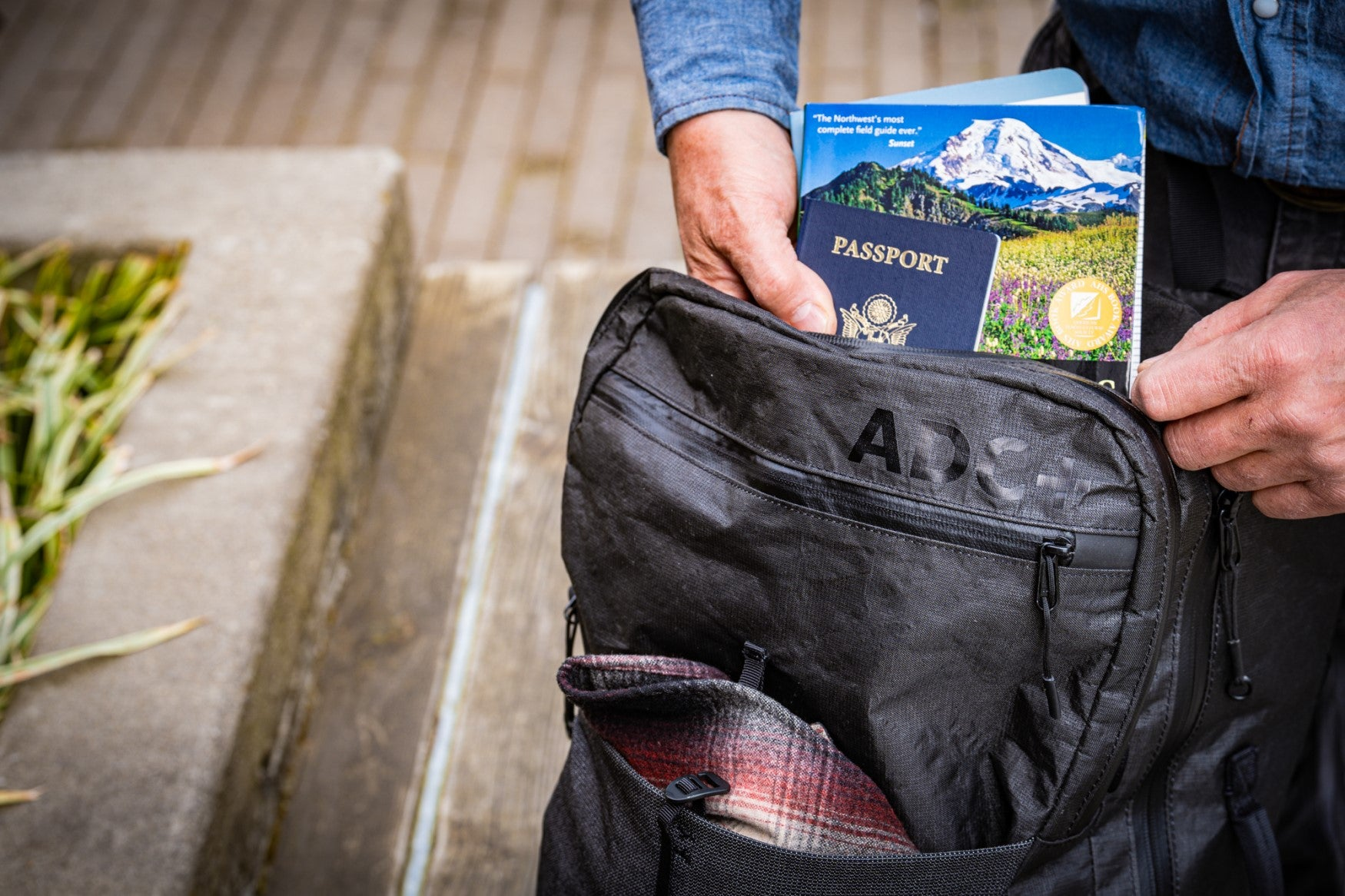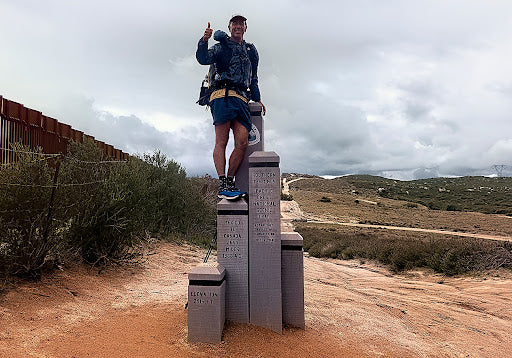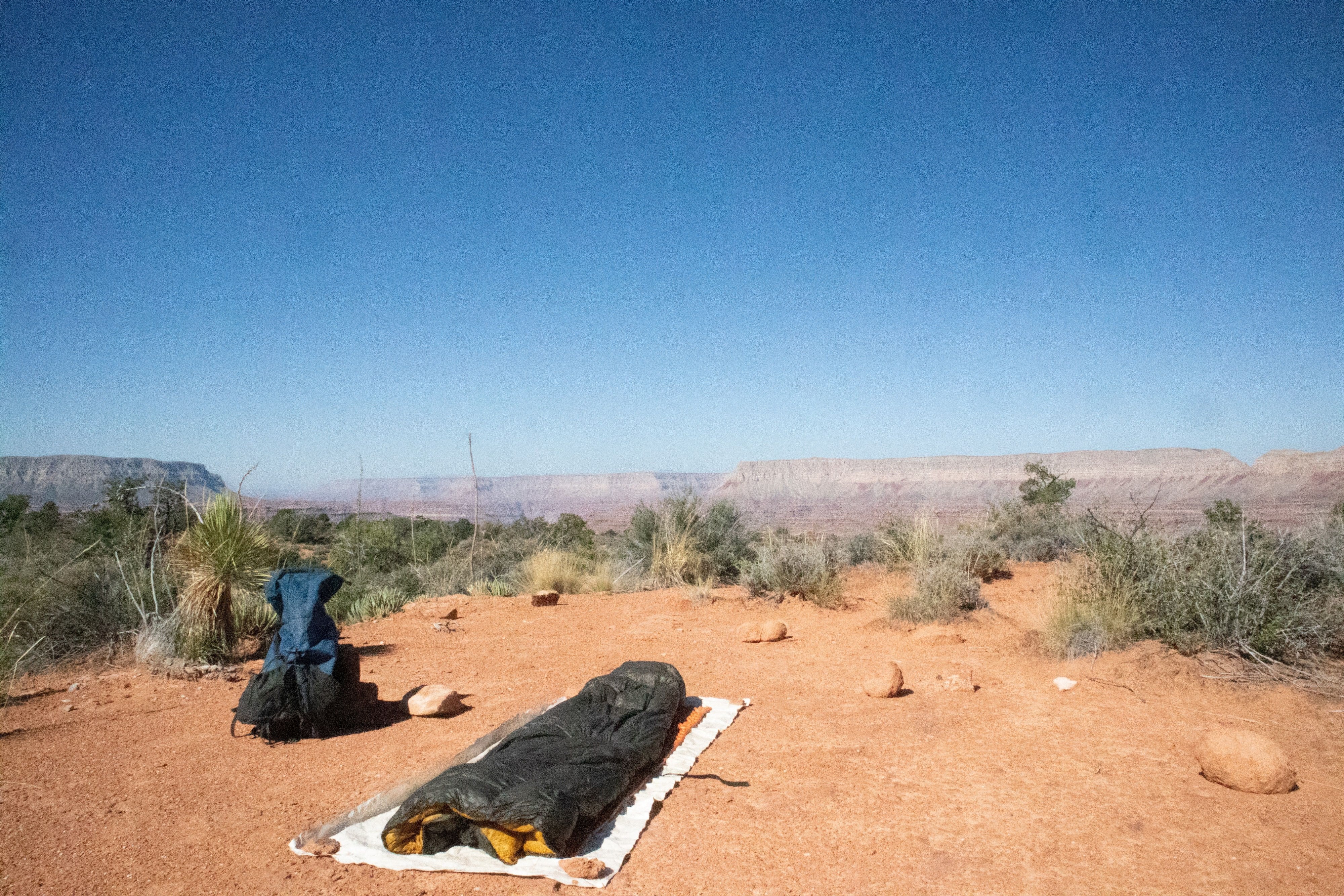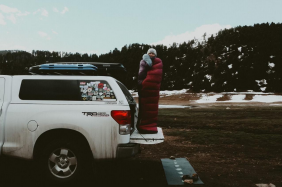Hiking the entire 2654-mile Pacific Crest Trail is an adventure of a lifetime. Very few people are fortunate enough to be able to spend roughly half a year of their lives walking, living, and breathing their everyday existence in the forest and mountains. It’s an incredible experience, yet one that does take some preparation and planning. If you’ve given the idea some thought but aren’t quite sure how to put it into action, here are a few pointers to making that first step a reality.
Is The Trail Really For You? While Cheryl Strayed might have just jumped right in, the reality is that she did not complete a thru-hike, and you most likely won’t either if you don’t put together at least a mini “resume” of outdoor walking. If you’ve never done any backpacking trips you might want to get some gear, go to your top-choice national park or forest for the weekend, and see how you like sleeping on the ground, being surrounded by mosquitoes, and making bathroom runs behind a tree. More seriously, if you are already an avid hiker/backpacker, consider a shorter trail as a good testing ground. I’m a lifetime trekker and climber, but the longest I’d ever been on a trail at one time carrying all my own gear was around three weeks. My wife and I decided to do the 500 mile Colorado Trail to see how our lightweight gear performed and how we liked being out in the woods that long. We loved it, and a year later took on the 800 mile Arizona Trail for two months to see if we still enjoyed being out for even longer. We also loved that, and not long afterwards, knew we were ready for the PCT. Sure, some people do show up at the border and manage to go all the way to Canada, but those without some sort of prior experience are usually asking for an early exit.

Perform Your Own Shakedown: At the start of the trail, there are usually some PCT vets who lie in wait for novice hikers, hoping to assist them in shedding unnecessary weight and gear. While this may be helpful for some, who is to say what items you really should or shouldn’t carry. I wore my camp sandals every single afternoon of my PCT journey, and I read my Kindle probably 90% of the nights, so for me, they most certainly were not luxury items. While 60% of the trekkers you meet might tell you that a zero drop trail runner is the way to go, another 40% find they won’t last more than a week with them on. Do your research, buy some gear, but then go out and actually use it and see how it works for you. While you can definitely move faster and use less energy by carrying less weight, this might also have its drawbacks. As someone correctly pointed out to me about halfway along the trail, those folks who didn’t carry so-called excess weight (like a change of clothing, a pack towel, or a stove) were the same people who rarely ever stopped before it got dark, as they didn’t have much to look forward to in camp. Our own plan on the PCT (and elsewhere) was to start early, finish early in the afternoon, and use the rest of the day to clean up, cook, read, and enjoy down time which made the walking every day that much easier as well as more enjoyable all the way to the finish.
Hiking Your Own Hike: There are vastly different styles or approaches to hiking on the PCT, and all of them have their own merits. I may have envied the folks carrying 10 pounds of base weight when they waltzed past me on a sunny day, but as a photographer, I was probably the most envious of the French gal I met who was happily willing to haul a heavy DSLR and extra lenses in her 40 pound bag. And while we laughed at a young British hiker who slept in every day until 1pm and then hiked mostly at night, he ended up completing the trail happy as a lark. That said, there are a few realities of walking such a long trail. In any given year, there really is about a six-month weather window when most hikers can complete the trail without bumping up the risk factor. If you divide 2654 miles by 180 days, it only comes out to just shy of 15 miles a day, which doesn’t sound too tough. But factor in days off, lower mileage in the Sierras, and other variables, and that number bumps up quite a bit. When my wife and I did the PCT, we planned to go slowly through the desert, giving ourselves time to get into trail shape and hit the Sierras after the snow melt. Like others, we also fell for the stories about how “Oregon is flat” and how easy it would be to do massive mileage there due to what great shape we’d be in. Once on trail, we found that we did much bigger mileage in the desert than we expected, subsequently took more days off, and then were able to enter the Sierras early due to it being such a dry year. But then we learned that Northern California had elevation gains almost similar to the Sierras, and that despite being in Olympic athlete-shape in Oregon, that walking 30 mile days consecutively took a brutal toll on our bodies. The PCT is an astounding and wonderful journey, and it is also a physical and mental ordeal. Prepare to embrace the highs and lows.

Trail Savvy: In the old days, you actually needed to know how to use a map and compass, and there were not enough hikers on the trail to count on someone coming along to give you directions if you were lost. While apps and in-phone navigation systems have made things much easier, your life isn’t worth losing to a lack of knowledge nor battery loss or equipment failure. Take some courses or at least have some experienced friends point you in the right direction before you set out, or else watch some videos and go practice near your home. Several PCT hikers have lost their lives crossing the San Jacinto Mountains in March or April snow because they either didn’t have or didn’t know how to use an ice axe. Hikers have gotten off trail and not known how to navigate back. Don’t be one of them. Take a basic snow or an orienteering course, and carry at least some version of a first aid kit and know how to use it.
The Big Three: While your final packing endeavors will involve a ton of “this goes this stays,” it’s worth investing time, energy, and money on three items that you will be spending a lot of time in or with. You’ll be wearing your pack 10-12 hours a day for half a year, so research proper pack fit and get one that works for you. While there are now packs being made that weigh less than 2lbs, my experience has been that those packs tend to only be comfortable up until about the 30 pound carry range, and when you put in those 8 days of food plus water in the High Sierra, you may end up well above that. I had several lightweight packs that I’d been using, but ultimately I settled on the Six Moon Designs Minimalist. I chose the flight vest option offered with the pack which was a real game changer, as it stopped any pack sway, allowed my core to handle the weight, and got rid of the sore shoulder problems I’d been having on long trips with other packs. The other items you’ll want to be picky about are your sleeping bag and tent. Quilts today have started to replace sleeping bags due to lower weight, but top of the line down bags are nearly as light and most definitely warmer. Some folks go super light and carry only a tarp, but I like my mosquito protection. The Six Moon Designs Haven Ultralight allows one to set up just a tarp or mesh tent inner if wanted, or combine the two for full protection.

Organize: While the PCT offers unlimited freedom; you get to choose where you walk to every day and sleep pretty much where you want and when you want, yet at the same time you still have to get your miles in and have the discipline to do so. It might be free to sleep in the woods, but every time you go into a trail town, it’s really easy to blow the bank, especially for a hungry hiker. Make a tentative plan, which includes a budget, some idea of a timeline, resupply or not plan, and when you need to apply to get that valued PCT permit.
Finally, all the cliches about the PCT totally apply. Hike your own hike, it’s not a race, it’s not about the finish line. The trail is so long that I never started out thinking or wondering if I could or would make it all the way, I just went out to enjoy the hike and the beautiful scenery and shared companionship on the journey. Somewhere up in Oregon I started to realize that I most likely would go all the way and that there actually was a finite end point out there somewhere, but the trail still remained pretty much about being in the moment and enjoying the incredible nature and fabulous characters one met while out on the adventure of a lifetime.











Leave a comment
This site is protected by hCaptcha and the hCaptcha Privacy Policy and Terms of Service apply.